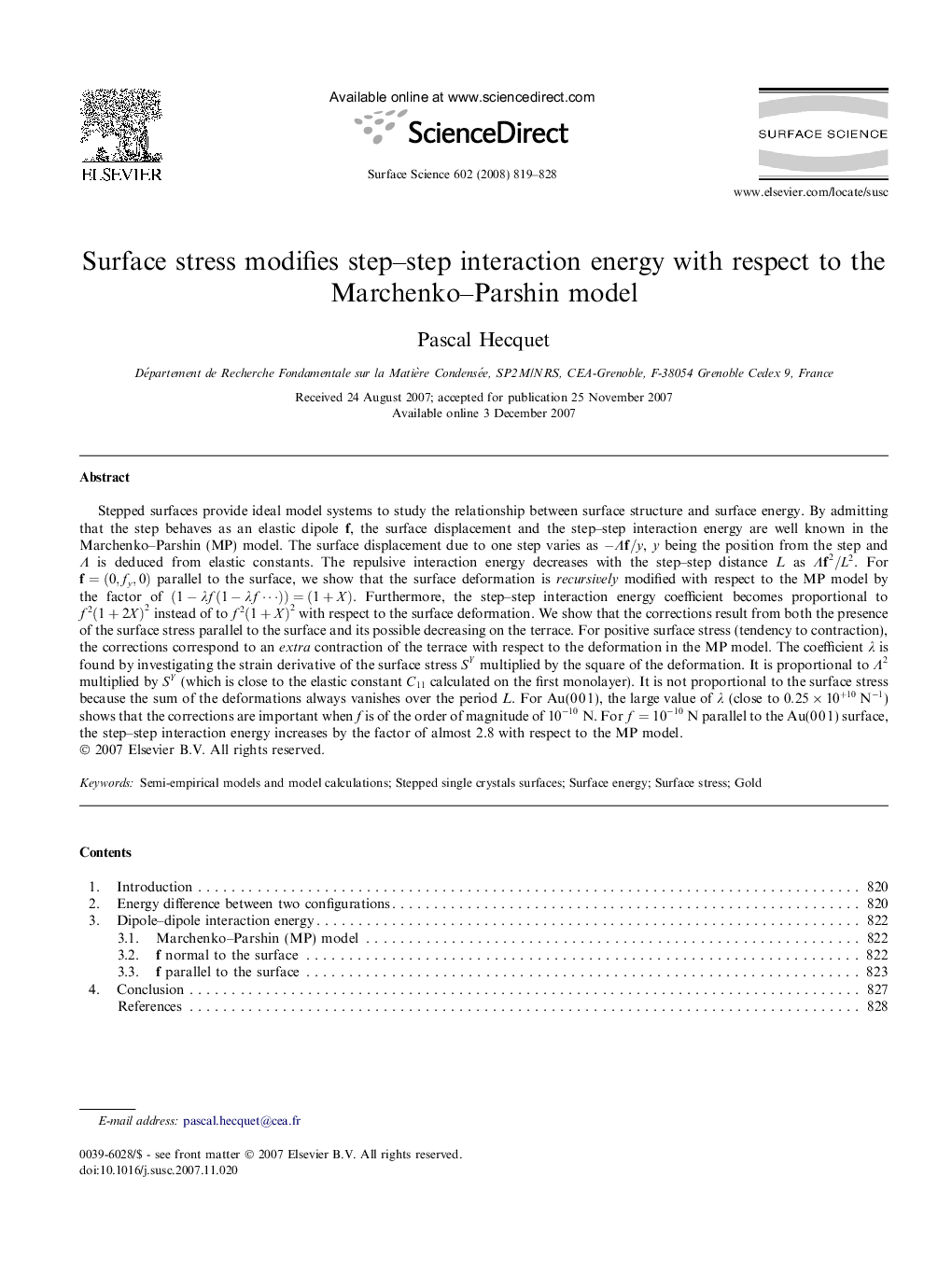| Article ID | Journal | Published Year | Pages | File Type |
|---|---|---|---|---|
| 5425457 | Surface Science | 2008 | 10 Pages |
Stepped surfaces provide ideal model systems to study the relationship between surface structure and surface energy. By admitting that the step behaves as an elastic dipole f, the surface displacement and the step-step interaction energy are well known in the Marchenko-Parshin (MP) model. The surface displacement due to one step varies as -Îf/y, y being the position from the step and Î is deduced from elastic constants. The repulsive interaction energy decreases with the step-step distance L as Îf2/L2. For f=(0,fy,0) parallel to the surface, we show that the surface deformation is recursively modified with respect to the MP model by the factor of (1-λf(1-λfâ¯))=(1+X). Furthermore, the step-step interaction energy coefficient becomes proportional to f2(1+2X)2 instead of to f2(1+X)2 with respect to the surface deformation. We show that the corrections result from both the presence of the surface stress parallel to the surface and its possible decreasing on the terrace. For positive surface stress (tendency to contraction), the corrections correspond to an extra contraction of the terrace with respect to the deformation in the MP model. The coefficient λ is found by investigating the strain derivative of the surface stress SY multiplied by the square of the deformation. It is proportional to Î2 multiplied by SY (which is close to the elastic constant C11 calculated on the first monolayer). It is not proportional to the surface stress because the sum of the deformations always vanishes over the period L. For Au(0 0 1), the large value of λ (close to 0.25Ã10+10N-1) shows that the corrections are important when f is of the order of magnitude of 10-10N. For f=10-10N parallel to the Au(0 0 1) surface, the step-step interaction energy increases by the factor of almost 2.8 with respect to the MP model.
